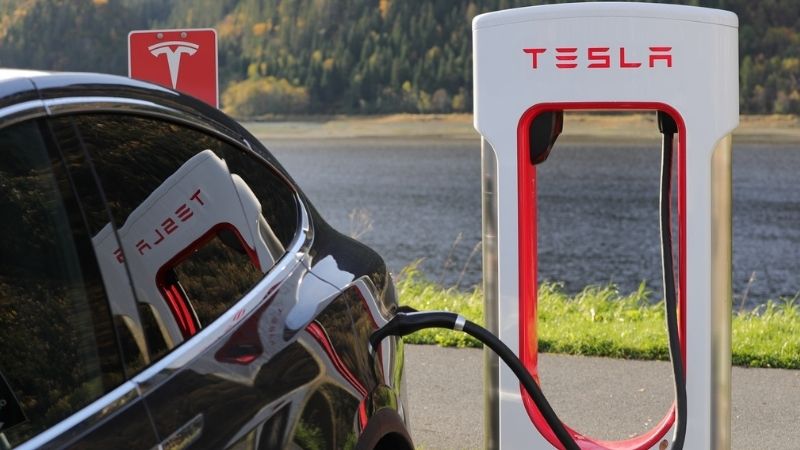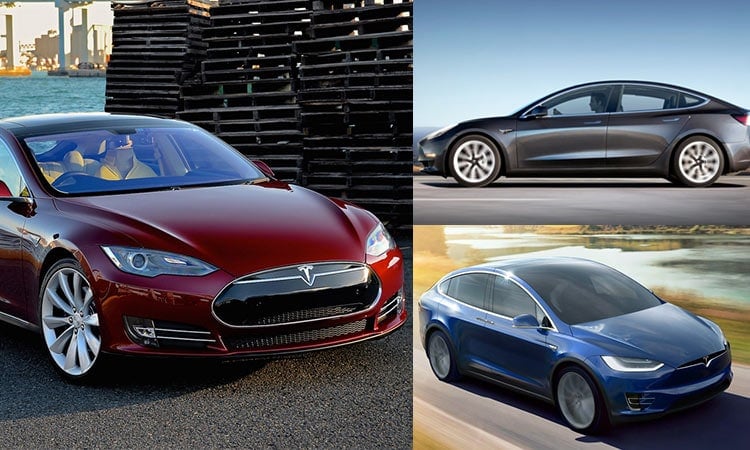Many people are startled to realize how hefty electric vehicles are, and that is understandable. However, even though they are very fast and are monsters on the track, they are substantially heavier than ordinary automobiles powered by internal combustion engines.
Electric vehicles are much heavier than conventional vehicles because of the additional batteries, stronger foundation and suspension, and metal armor around the battery to protect it. This additional weight causes the vehicle to slow down and reduces the overall range it can go.
Interested in understanding why electric vehicles such as the Tesla are so heavy? Keep reading to find out all you need to know about why electric vehicles are so heavy.
What is the Average Weight of Electric Cars?

Electric vehicles are still considered a marvel in the automotive business.
The majority of electric vehicles (EVs) do not release carbon dioxide (CO2), which helps to minimize air pollution. The weight of electric vehicles, on the other hand, is a problem that has gone unnoticed.
Bjorn Nyland, a Norwegian YouTuber who specializes in electric vehicles, conducted a weight measurement on hundreds of electric automobiles for his channel.
The following are the results that he reached due to his research.
- The average weight of the electric vehicles he examined was around 1,940 kg.
- Only one-third of the autos had a weight that was more than 2,000 kg.
- The majority of automobiles weighed between 1,500 and 2,000 kg.
- There were just a handful of types that weighed less than 1,500 kg.
Electric vehicles are often heavier than automobiles fuelled by gasoline or petroleum. Take, for example, Ford Motor Company. The Ford Mustang Mach-E weighs 500 pounds more than the Ford Edge.
However, there are currently no trucks, pick-ups, or big SUVs available in the category of electric cars at this point. As a result, the average curb weight of electric vehicles is still somewhat lower than that of vehicles powered by internal combustion engines.
What is the Average Weight of Teslas

Though it has only been a few years since Tesla entered the automobile industry, the company has made a reputation for itself. They’ve changed the game in the auto industry by producing not just electric vehicles but also vehicles that are ecologically beneficial.
Tesla automobiles are the most fuel-efficient since they significantly reduce the weight of their vehicles.
Tesla’s range in weight from 2,723 lbs to 5,390 pounds for the most recent versions. The following is a breakdown of the models:
- 1st Generation Tesla Roadster—2,723 lbs
- Model 3 Standard Range Plus—3,582 lbs
- Model 3 Long Range/Performance—4,065 lbs
- Model S Plaid—4,786 lbs
- Model S Long Range—4,561 lbs
- Model Y Long Range/Performance—4,416 lbs
- Model X Long Range—5,185 lbs
- Model X Plaid—5,390 lbs
Related reading:
What is the Average Weight of ICE (Internal Combustion Engine) Cars
Internal Combustion Engine Cars have less heavy batteries, unlike their electric equivalents. Internal Combustion Engine Cars are powered by the engine instead of the battery.
The engine features a fixed cylinder and a piston that can move around within it. The force put on the piston by the expanding combustion gases causes it to rotate, which in turn drives the crankshaft.
This motion is eventually communicated to the vehicle’s wheels through the powertrain, which is made up of a series of gears.
The average Internal Combustion Engine weighs around 2050 to 3596 pounds. The differences in the weight of Internal Combustion engines depends on the type of vehicle from small compact cars to large SUVs.
Things That are not Different in an Electric Vehicle (Or Even Lessen it)
A selection of products with weights that remain constant or get lighter when comparing an electric vehicle to a gasoline-powered automobile is also available.
The majority of the interior’s components will remain mostly untouched. Seats, steering wheels, and panels may be duplicated and pasted into other scenes.
Aside from that, the HVAC system and any infotainment systems may be left mostly unmodified.
What Determines a Car’s Weight?
Every component of your vehicle will influence the overall weight of the finished product.
Even the rims of your automobile, which may seem inconsequential, may significantly influence the environment. This includes the weight of passengers, luggage, and even the quantity of gasoline in the tank.
Hence a variety of phrases are employed to indicate the weight of a vehicle in a certain condition. Curb weight, gross weight, and towing capability are prominent examples.
Reasons Why Electric Cars are so Heavy
Nissan Leaf cutaway showing part of the battery in 2009
CC BY-SA 3.0, Link
The weight gap between ICE and EV cars is mostly due to differences between the two kinds of vehicles. I’ll explain why electric automobiles weigh more than gasoline-powered vehicles below.
1. Battery Packs
Battery packs are rather large. They are built to store enough energy to propel an electric vehicle.
They are made up of several similar batteries or individual battery cells connected in series, parallel, or a combination of the two to provide the necessary voltage, capacity, or power density.
The batteries determine the electric car’s range, speed, and total power. That means you need more batteries for better performance. It leads to a straightforward conclusion: the more batteries a battery pack has, the heavier it gets.
To explain how much the batteries weigh, consider the following examples:
- A Tesla Model S weighs 2,241 kg overall, with the battery weighing roughly 544 kg (almost half a ton). Therefore, the battery accounts for 24% of the vehicle’s overall mass.
- The Tesla Model 3 Long Range is 4,250 pounds in weight. The battery alone weighs 1,000 pounds out of the entire weight. This implies that the battery accounts for over a quarter of the vehicle’s total weight.
Related reading:
2. Metal Encasing Around the Battery
If a battery is pierced or significantly damaged, it could explode. There must be a sturdy casing around the battery to prevent this catastrophe.
This shell comprises a heavy-duty metal that protects the form of armor. When you hear the words “heavy-duty” and “metal” in the same phrase, you already know that there is an additional layer of weight on top of the item.
3. Added Electronics
Compared to automobiles powered by internal combustion engines, electric vehicles are highly computerized. They are almost certainly going to include a lot of cabling and other electronic components.
Onboard processors, sensors, and cameras, among other things, are important components of an electric vehicle. Although each of these components weighs very little, their total weight tends to mount up.
Traditional automobiles also include cabling, but to a lesser level than modern automobiles. Why? They do not have batteries and are not as technologically sophisticated as electric vehicles.
4. Extra-Comfort-Inducing Accessories
Electric vehicles are still seen as a luxury items in the automobile industry. Instead of being sought after for their performance, people are drawn to them because they give greater comfort than regular automobiles.
Electric vehicles are outfitted with soft seats, heating, ventilation systems, and infotainment displays to improve the overall degree of comfort. In addition, these items contribute to the total weight of the vehicle.
The driving experience that they deliver, on the other hand, is well worth the additional money.
5. Body Structure With a Greater Weight to it
Many of the components of an electric vehicle are much heavier than those of a gasoline-powered vehicle.
For example, the battery suspension, electric controls, and so on. Consequently, the body and structure of the vehicle must be similarly sturdy to support all of the heavy components.
Most of the time, heavy metal is used to construct a robust body and structure, resulting in even greater weight.
6. Stronger Suspension
Suspension is the term used to describe the system of springs and shock absorbers that allows wheels to move freely in a vehicle.
When the body of an electric vehicle is heavy, the suspension must be as strong to support the additional weight.
Consequently, the suspensions of most electric vehicles are heavier than the suspensions of regular vehicles, contributing to the total weight of the vehicle.
How does it fare if you put the suspension from a standard automobile in an electric vehicle? Every bump, pothole, and other road hazard influences your ability to drive safely.
7. Additional Hardware for Charging
Although you’re getting rid of your gas tank, you’ll still need the means to bring electricity into your automobile.
An EV is equipped with an external charger plugged into the car overnight and recharges the battery in the same way that your smartphone does.
It also has internal components that transform the incoming stream of power into a charge that can be used by your vehicle. Your car will gain weight as a result of this.
How Does The Weight of an Electric Vehicle (EV) Help it Recharge Faster Through Regenerative Braking
There’s an intriguing thing going on in electric vehicles, and it might be why automakers are hesitant to build slimmer vehicles. A heavier vehicle going downhill or braking will create more energy than a lighter one.
Regenerative brakes allow you to get more mileage out of your automobile without charging it. For your automobile to utilize the additional kinetic energy generated during coasting, it must first be converted into useful electricity for the battery.
If you roll your automobile down a long enough slope, you can theoretically charge your battery completely without ever getting out of the car.
Can Electric Cars Become Lighter and Still Perform the Same?
Decreasing the vehicle’s weight means it will use less energy to accelerate. Research also estimates that reducing the weight of a car by 10% can increase fuel efficiency by roughly 6% to 8%.
Furthermore, using lightweight materials may lower an automobile chassis’ weight in half.
A full-battery EV with a 35.8kWh battery pack and a 100kW electric motor is now about 125 percent heavier than a conventional internal combustion engine car.
With over a billion automobiles worldwide, lowering automotive emissions is a top priority for both manufacturers and customers. When purchasing a new automobile, buyers prioritize safety and fuel efficiency.
As a result, electric automobiles will perform better if their weight is lowered. All that’s needed is a lighter battery component instead of lithium-ion.
However, manufacturers are presently not prioritizing weight loss as a priority. They’re fighting greater challenges like increasing range, charging faster, and improving their engines.
Related reading:
Is a Heavier Car Better or Worse in General?
Weight directly influences handling, peak speed, acceleration, and range. So heavier automobiles might be beneficial or terrible. Let’s dig further into these.
The hefty weight of electric automobiles helps in the following situations:
- Heavyweight keeps the C.G. low. It lowers the corner roll and helps you manage the automobile better.
- Heavy electric automobiles may also carry greater weight. This is not always the case and depends on the electric vehicle type.
- Heavy electric automobiles can haul a lot.
Electric vehicles’ considerable weight causes problems in the following situations:
- A heavier automobile takes more force to move. Because electric automobiles are heavier, their batteries need more energy.
- The extra weight slows your electric vehicle down and lowers its range.
- Heavy trucks are riskier in road accidents. Adding a foldable room to electric automobiles may be one answer to this issue. The extra room would make the electric vehicles even larger.
- Heavy trucks also harm roads. Most roads and bridges are built to support massive commercial vehicles. The extra weight of electric passenger automobiles would eventually wear out. So road surfaces will be short-lived.
- Electric vehicles are loved for lowering CO2 emissions. How? Heavy vehicle construction demands more resources and energy. Also, electric vehicle tires and batteries need to be replaced often.








